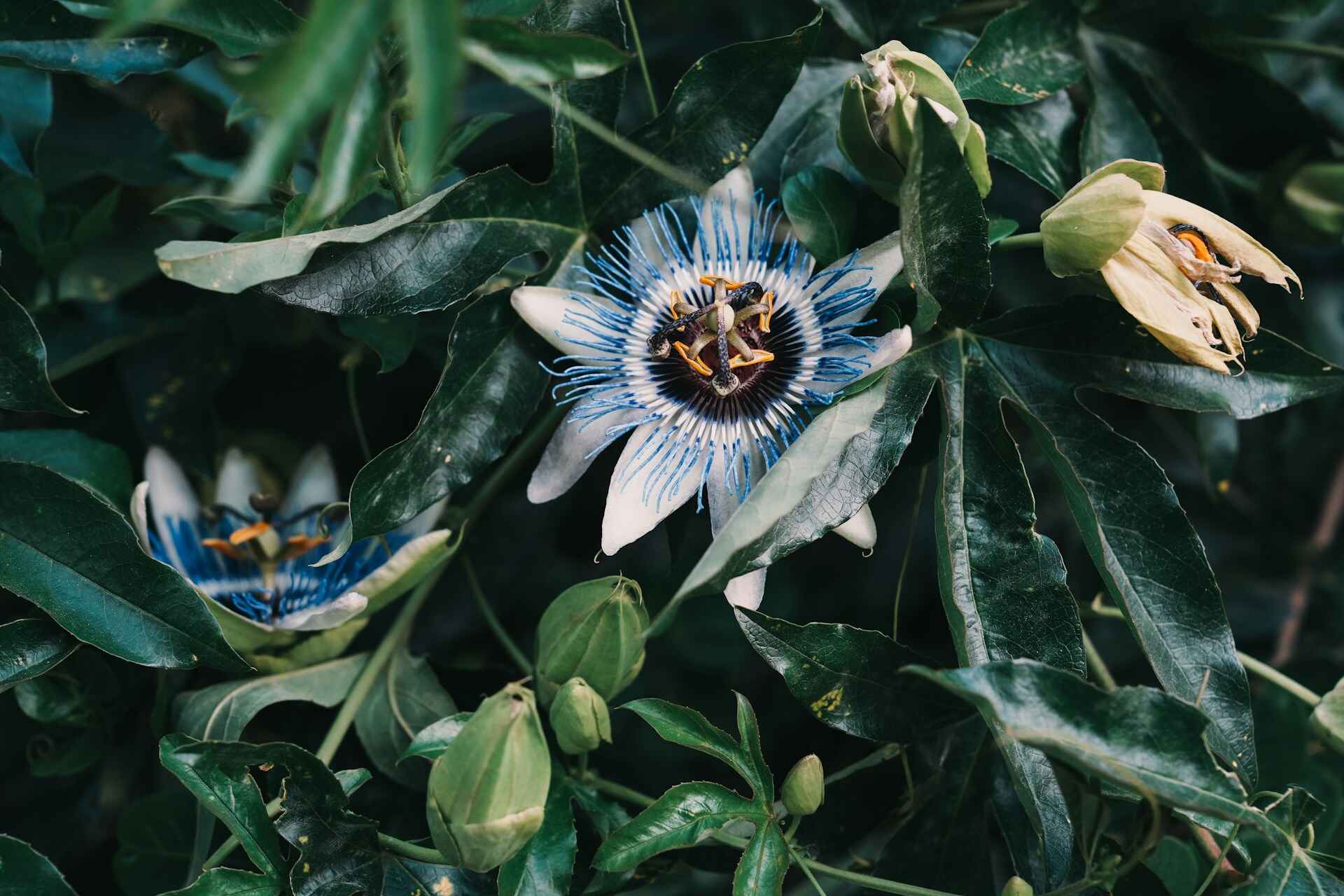Okay, let’s go! this post has all the info you need to get growing Lilikoi passion fruit plant!
Why Grow Lilikoi Passion Fruit?
Lilikoi (passion fruit) is not just good to eat; it’s also a beautiful plant that can add to the beauty of your workplace. The fruit is loved for its flavor, a combination of tart and sweet, good for juices, desserts and even savory dishes. The plant is a strong vine that can add a rich tropical feel to any outdoor space or place.
Getting Started with Lilikoi Passion Fruit
Understanding the Plant
Lilikoi is a tropical vine from South America but grown in warm climates all over the world. It loves full sun and warmth. The flowers turn into round or oval fruits with a hard outer skin and juicy seed filled inside.
Choosing the Right Variety
There are many types of passion fruit but the two most common are purple and yellow. Purple (Passiflorine edulis) is more cold hardy and yellow (Passiflorine edulis f. flavicarpa) is warmer. Choose the one that suits your climate for a good harvest.
Preparing Your Garden
Selecting the Site
Full sun is required for passion fruit to grow so choose a spot in your garden that gets at least 6 hours direct sun a day. Soil should be well draining and rich in organic matter. If your soil is clay or very sandy consider adding fertilizers to improve the texture and fertility.
Soil Preparation
Before you plant test your soil pH. Lilikoi like slightly acidic to neutral soil pH 6.0 to 7.0. If your soil is too acidic or too alkaline you may need to adjust. Lime will raise the pH and sulfur will lower it.
Work compost or well rotted manure into the soil to give it nutrients. This will not only enrich the soil but also improve the structure so the roots can penetrate.
Planting Lilikoi Passion Fruit
Starting from Seeds
If you’re starting from seed, wet them in warm water for 24 hours to loosen the hard seed coat and increase bud. Plant them in a good seed starting mix and keep moist but not waterlogged. Put the seed trays in a warm sunny spot and wait, passion fruit seeds can take weeks to bud.
Transplanting Seedlings
Once they have 2-3 sets of leaves and are 8-10 inches tall, they can be moved to the garden. Space them 6-10 feet apart.
Providing Support
Passion fruit are climbers so need support to grow well. Install a grille, barrier or shelter before planting. The structure should be strong enough to hold the weight of the mature plant and fruit. As it grows, train it gently to the support with some garden twine.
Caring for Your Lilikoi Passion Fruit Plant
Watering
Water well and often especially in dry times. Soil should be moist not waterlogged. fertilizers around the base of the plant to retain moisture and reduce watering. Water well and often especially in dry times. Soil should be moist not waterlogged. Mulch around the base of the plant to retain moisture and reduce watering.
Fertilizing
Lilikoi are heavy feeders so fertilize regularly. A balanced fertilizer with equal parts nitrogen, phosphorus and potassium (10-10-10) every 4-6 weeks during growing season. Organic options like compost tea or fish mixture are great too.
Pruning
Pruning helps to control the vine and produce fruiting wood. Prune in late winter or early spring, remove any dead or weak growth. Cut back strong growth to keep the plant in check and air circulating
Pollination and Fruit Set
Self pollinating but hand pollination can increase fruit set especially in areas with low pollinators. To hand pollinate use a small brush to transfer pollen from the anthers to the stain of each flower.
Dealing with Pests and Diseases
Common Pests
Pests can attack passion fruit vines, aphids, mealybugs, fruit flies. Check your plants often and act fast if you see any infestation. Insecticidal soap or neem oil will do the trick for most pests.
Disease Management
Root rot and fusarium wilt are the most common diseases of passion fruit. Make sure your soil drains well and don’t overwater. If you see any disease symptoms like yellow leaves or wilting, cut off the affected part of the plant.
Harvesting and Using Lilikoi Passion Fruit
When to Harvest
70-80 days after flowering. Fruit will turn purple or yellow depending on the variety and will fall off the vine when ripe. Squeeze gently, if it yields to pressure it’s ready to eat.
Storing and Using the Fruit
Passion fruit can be stored at room temp for a week or in the fridge for a month. The pulp can be used in juices, smoothies, desserts and sauces. To juice, cut in half and scoop out the pulp. Strain if you want to remove the seeds.
Troubleshooting Common Issues
Poor Fruit Set
If flowers but no fruit, not enough pollination. Get more pollinators in your garden or hand pollinate.
Yellowing Leaves
Yellow leaves? Nutrient deficiency, water stress or disease. Check your watering, check your nutrients, check for pests or disease.
Lilikoi Passion Fruit Case Study
In a Hawaii case study, lilikoi passion fruit vines grown in well draining, nutrient rich soil with regular watering and fertilization produced more than those grown in less than ideal conditions. The study also showed the importance of proper support and regular pruning to keep healthy, productive plants.
In the study, hand pollinated vines had a much higher fruit set, so hand pollination is worth it especially in areas with less natural pollinators. Plants monitored closely for pests and diseases and treated on the time had less issues and more overall production.
Conclusion
Growing lilikoi passion fruit can be so much fun, and add beauty and flavor to your garden. With the right care and attention you can have a big harvest of passion fruit. Remember to choose the right variety for your climate, prepare the soil well, provide good support, and keep up with regular watering, fertilizing and pruning. Follow these tips and you’ll be growing lilikoi passion fruit in your own garden in no time.
Happy gardening, and may your lilikoi passion fruit plant grow!

